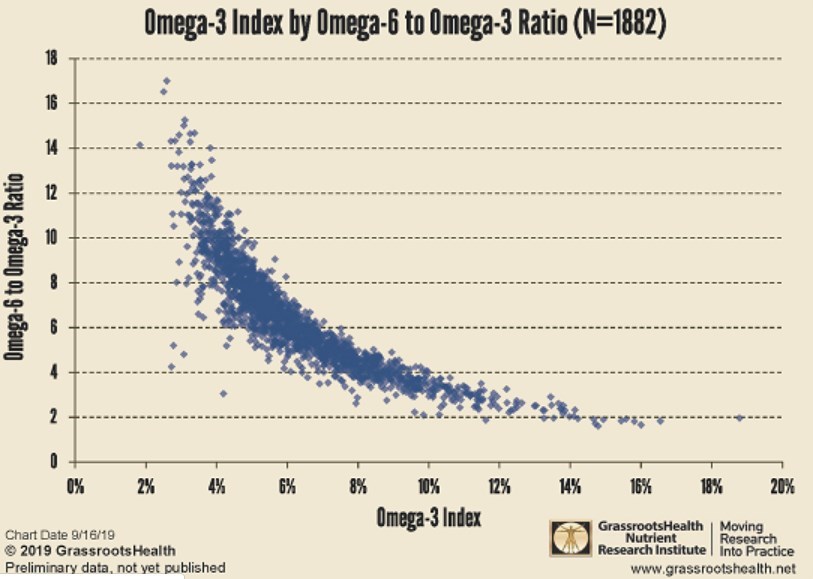Omega-3 index replaces the Omega-6 to Omega-3 ratio
The Omega-6:Omega-3 ratio: A critical appraisal and possible successor
Prostaglandins, Leukotrienes and Essential Fatty Acids, 20 March 2018, https://doi.org/10.1016/j.plefa.2018.03.003
William S.Harris
Highlights
Polyunsaturated fatty acid blood levels have predictive power for disease outcomes.
Both the Omega-3 Index and the n6:n3 ratio have been used to express PUFA status.
The n6:n3 ratio has become scientifically out-dated.
The Omega-3 Index, because if included EPA and DHA only, is a preferred metric.
The well-known health effects of the long-chain, marine omega-3 (n-3) fatty acids (FAs) has led to a growing interest in the prognostic value that blood levels of these FAs might have vis-à-vis cardiovascular and neurocognitive diseases. The measurement and expression of n-3 FA levels is not straight-forward, however, and a wide variety of means of expression of n-3 FA status have been used in research and clinical medicine. This has led to considerable confusion as to what “optimal” n-3 FA status is. The n-6:n-3 ratio has enjoyed relatively widespread use, but this apparently simple metric has both theoretical and practical difficulties that have contributed to misunderstandings in this field. Just as the once-popular polyunsaturated:saturated FA ratio has largely disappeared from the nutritional and medical literature, it may be time to replace the n-6:n-3 ratio with a newer metric that focuses on the primary deficiency in Western diets – the lack of eicosapentaenoic and docosahexaenoic acids (EPA and DHA). The Omega-3 Index (red blood cell EPA+DHA) has much to recommend it in this regard.

📄 Download the PDF from Sci-Hub via VitaminDWiki
VitaminDWiki notes
Note: Omega-3 Index cannot get very high (>7) if there is too much Omega-6
Note: Current target for Omega-3 = 8. Japan considers target= 10
Omega-3 – Chart of index vs ratio by GrassrootsHealth – Sept 2019
Omega-3 index - good level needed 2.4 grams of regular Omega-3 - Grassroots Nov 2018
Depression after childbirth 5 X less likely if good Omega-3 index – April 2019
Omega-3 index of 6 to 7 associated with best cognition in this study – Nov 2019
Omega-3 index of 5 greatly decreases the risk of an early preterm birth – Dec 2018
Predicting the effects of supplemental EPA and DHA on the omega-3 index Aug 2019 doi: 10.1093/ajcn/nqz161.
- 2 grams/day, 14 trials, average 14 weeks Index 4.9% ==> 8.1%
No NCAA player had a healthy Omega-3 index – Jan 2019
NCAA trainers do not appear to have gotten on board the Omega-3 train yet
NCAA trainers are getting on board the Vitamin D train (40-50 ng)– Nov 2019
Vitamin D and Omega-3 category starts with
{include}
14+ VitaminDWiki pages with OMEGA-6 in the title
This list is automatically updated
{LIST()}

